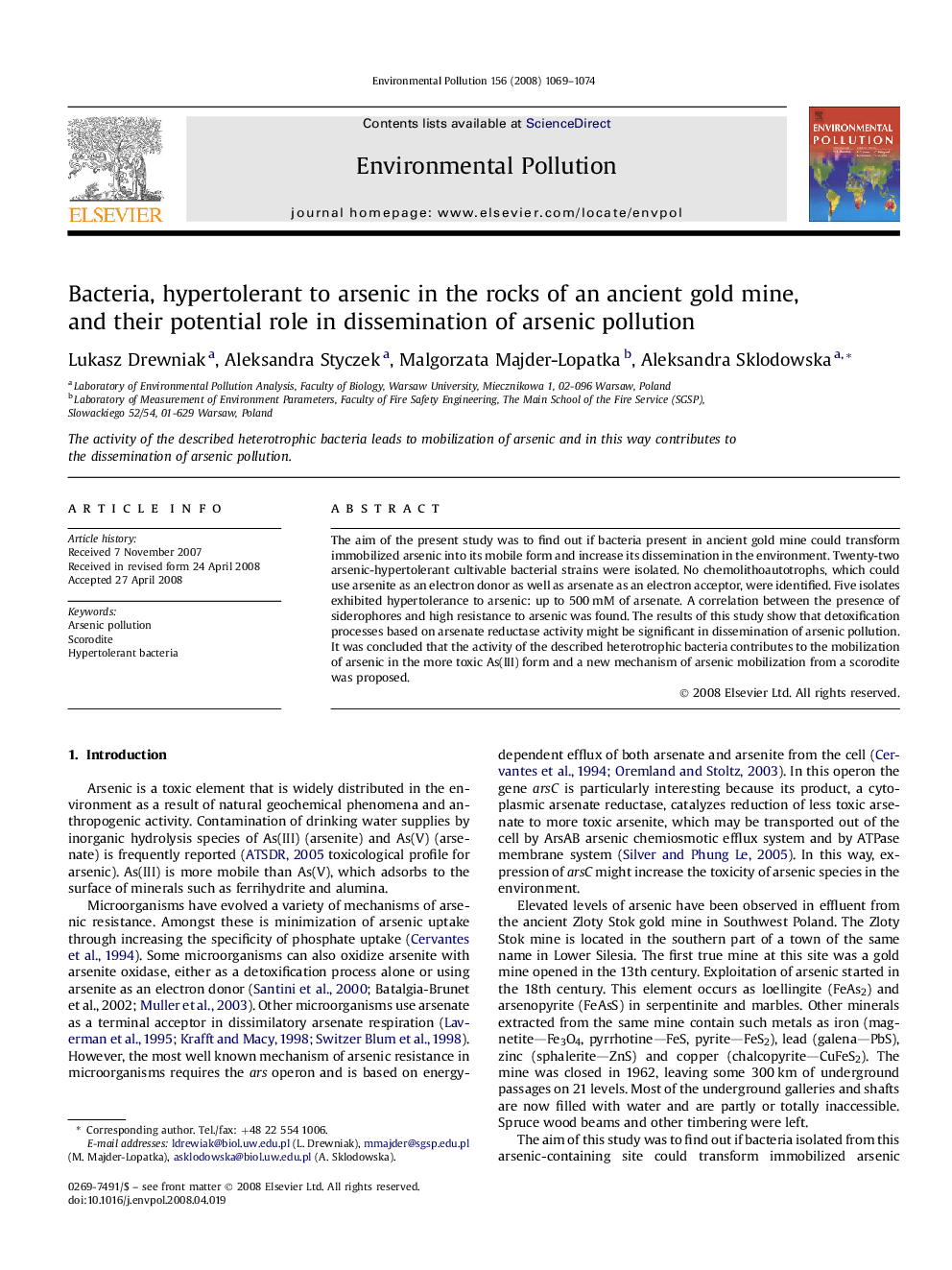| Article ID | Journal | Published Year | Pages | File Type |
|---|---|---|---|---|
| 4426248 | Environmental Pollution | 2008 | 6 Pages |
The aim of the present study was to find out if bacteria present in ancient gold mine could transform immobilized arsenic into its mobile form and increase its dissemination in the environment. Twenty-two arsenic-hypertolerant cultivable bacterial strains were isolated. No chemolithoautotrophs, which could use arsenite as an electron donor as well as arsenate as an electron acceptor, were identified. Five isolates exhibited hypertolerance to arsenic: up to 500 mM of arsenate. A correlation between the presence of siderophores and high resistance to arsenic was found. The results of this study show that detoxification processes based on arsenate reductase activity might be significant in dissemination of arsenic pollution. It was concluded that the activity of the described heterotrophic bacteria contributes to the mobilization of arsenic in the more toxic As(III) form and a new mechanism of arsenic mobilization from a scorodite was proposed.
